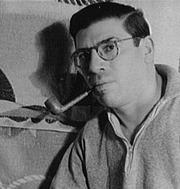Love of Seven Dolls
Status
Rate
Check Later
Official Sites
People
Times
This is the expanded novella of a story by Mr. Gallico titled, The Man Who Hated People. It was published in the Saturday Evening Post in the October 28, 1950 issue. The short story differs from this novella. The story (available to read here http://kukla.tv/manwho.html) tells the tale of Milly Maynard, a young woman who appears on the Peter and Panda show, a popular children's television show, on which she talks to six puppet characters. The puppets are Peter (a leprechaun), Panda (a fat panda), Arthur (a raffish crocodile), Mme. Robineau (a French lady), Doctor Henderson (a stuffy penguin), and Mr. Tootenheimer (an elderly toymaker). It's also about the love/hate relationship the girl has with the disfigured puppet-master, a former hockey player whose face was scarred after accidents on the ice.
The story and the novella along with the film, Lili, became the basis for Carnival, the Broadway musical. Carnival is a musical, originally produced by David Merrick on Broadway in 1961, with the book by Michael Stewart and music and lyrics by Bob Merrill. It starred Anna Maria Alberghetti and was directed by Gower Champion. The actors Jerry Orbach and Kaye Ballard were also in the original Broadway cast.
The book is available at various book sites on the Internet but a physical copy of the book is difficult to find from a library, even using WorldCat. Most of the copies are in Australia or England. The scanned copy here at Internet Archive/Open Library is the only easily accessible copy I could find.
The following synopsis comes from the original Kirkus review published on November 4, 1954 (see link) and you can see how the plot and location of the short story has changed.
"Paris and the rural byways of France form the setting for the story of ""Mouche"", a 22-year old orphan, adrift and jobless in a Paris spring. Movie goers will have seen the screen version of her rescue by a troupe of puppets, of her strange adventure in the land of half truth, grim and unpalatable, and half make believe. The show, with a naive girl and effectively operated puppets who seem truly to have their independent beings, becomes a rural sensation. But the puppeteer keeps out of public view -- and in his private life seems cruel, malicious, hard and cynical. It is only when Mouche -- at the end of the season- promises to marry a trapeze artist in the show, that he finds a way to make her see that he is the composite of all the puppet characters she has come to love."
This synopsis is from Google Books (see link).
"A lonely Parisian waif becomes emotionally involved with a street puppet show and the evil puppeteer. Her belief in the life of these dolls finally brings fame and happiness."
This synopsis is from Amazon (see link).
"In postwar Paris, Mouche, a young woman who has lost her job with a carnival, is persuaded not to commit suicide by the cheerful puppets of Captain Coq, a gruff puppeteer"
This more complete synopsis comes from a Web site, Fleur in Her World, written by a woman named Jane who lives on the Cornish coast in England (see link).
"The story opens on the banks of the Seine where a young girl, Mouche, is planning to throw herself in.
Why? The war left Mouche an orphan. She dreamed of the stage and so she worked and save until she could come to Paris. But she found that she had neither the talent nor the looks needed to succeed. She looked like the simple country girl she was. And so she found herself at the age of twenty-two with no money, no home, and no friends to help her.
Paul Gallico, as ever the consummate storyteller, sets the scene perfectly.
“Hello there, you with the suitcase! Where are you going and what’s your hurry?”
“It’s cold at the bottom of the river, little one, and the eels and crayfish eat your flesh.”
“What’s the big tragedy? Your boyfriend give you the air? There’s plenty more fish in the sea.”
“Well? Cat got your tongue? Speak up when you’re spoken to.”
Who called Mouche back? At first all that she could see was an empty puppet booth with a sign announcing “Captaine Coq et sa Famille.” Then she saw a puppet. She would see seven, they all came out to see what was going on and to talk to Mouche.
First would be Carrot Top, careworn and caring manager of the show. Later there would be Dr Duclos, a pompous penguin. Mr Reynardo the scallywag fox, a loveable rogue…
It was magical and it was real. Seven puppet with characteristics so human that you could forget what they were.
Mouche was caught up. She had found friends, and she had found the warmth and magic of theatre of her dreams. such a contrast from the world she had wanted to escape minutes before. She quite forgot that there was a man behind the theatre working the puppets.
A crowd gathered to watch the interplay between girl and puppets. They were charmed, and so was I.
The girl joined the show.
But what of the puppeteer? The man who created such wonderful characters. He was an orphan like Mouche, but he was a troubled and unhappy man who would ill treat his new protegé and the young boy who worked for him?
How can you reconcile the character of the man and the characters of his creations?
How can Mouche reconcile her love for the seven puppets and her distaste for the man who brought them to life?
A wonderful story unfolds, and a resolution seems impossible, but then Paul Gallico brings the story to a conclusion that is unexpected but entirely right.
Along the way is joy, pain, and so many wonderful things are said about life, love, and the simple truths that are so important.
Love of Seven Dolls is both charming and utterly moving.
There is so much I more could say about this book, but I won’t ramble and I will add just three more words: read this book!"
Seems like you haven't provided a review
Don't miss the opportunity to share your thoughts!


